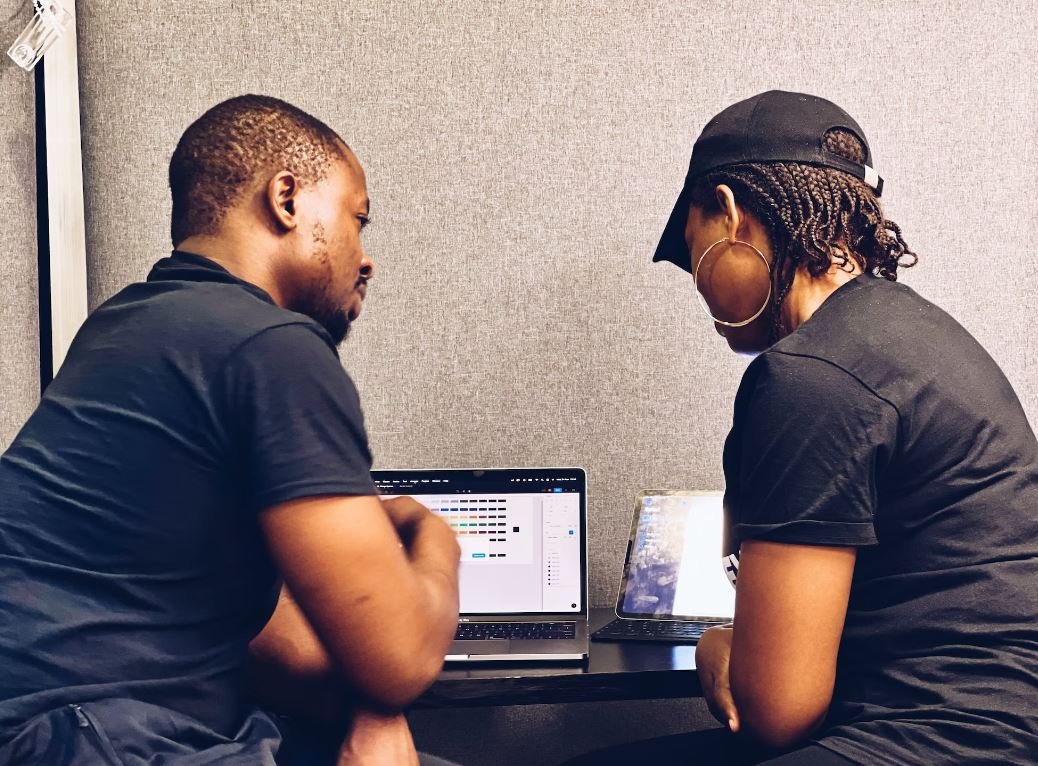What Is Video Production
Video production refers to the process of creating video content for various purposes, such as entertainment, advertising, marketing, education, and more. It involves a series of stages, including planning, scripting, shooting, editing, and distribution, with the goal of conveying a message or telling a story through moving images.
Key Takeaways:
- Video production is the creation of video content for multiple purposes.
- It involves various stages, including planning, scripting, shooting, editing, and distribution.
- The goal of video production is to convey a message or tell a story through moving images.
In today’s digital world, **video production** has become increasingly popular and accessible. With the rise of smartphones and affordable video equipment, almost anyone can create videos. From short clips for social media platforms to full-length documentaries, the possibilities are endless. *Video productions can be powerful tools for storytelling and engaging audiences through visuals and sound.*
To understand the video production process, let’s explore its various stages:
Planning
During the planning stage, the vision and purpose of the video are determined. This includes defining the target audience, setting objectives, creating a budget, and developing a production timeline.
Scripting
Once the video’s purpose is established, a script is written. The script outlines the narrative, dialogue, and visuals, ensuring a cohesive and organized production process. *A well-crafted script forms the backbone of an engaging video production.*
Shooting
The shooting stage involves capturing the required footage for the video. This can take place in various locations, depending on the production’s needs and creative vision. Professional videographers use high-quality cameras, lighting equipment, and audio recording devices to capture clear and visually appealing content.
Editing
Once the footage is captured, it goes through the editing process. This involves selecting the best shots, arranging them in the desired sequence, adding transitions, applying visual effects, and syncing audio. *Editing enhances the storytelling element of a video production.*
Distribution
After the video is edited and finalized, it is ready for distribution. This can involve publishing it on various platforms, such as websites, social media channels, television, or film screenings. *Effective distribution ensures the video reaches the intended audience.*
Video production is a highly collaborative process that requires the involvement of different professionals, such as producers, directors, cinematographers, editors, and sound technicians. Together, they work towards creating a compelling visual experience that resonates with the viewers.
Tables:
| Expense Category | Percentage of Budget |
|---|---|
| Camera Equipment | 30% |
| Production Crew | 25% |
| Location Fees | 15% |
| Post-Production | 20% |
| Other | 10% |
| Style | Description |
|---|---|
| Documentary | A style that focuses on presenting factual information or telling real-life stories. |
| Animated | Utilizes animated characters or graphics to convey the message in an engaging and creative way. |
| Interview | Involves recording conversations or interviews to capture personal experiences or expert insights. |
| Explainer | Short videos that aim to explain complex concepts or products in a concise and accessible manner. |
In conclusion, video production is a dynamic and creative process that gives life to visual stories. It requires careful planning, scripting, shooting, editing, and distribution to effectively convey a message or engage an audience. Whether it’s a documentary, animation, interview, or explainer video, each style brings its own unique appeal. So why not explore the world of video production and unleash your creativity?

Common Misconceptions
Video Production Requires Expensive Equipment
Many people believe that video production is only possible with high-end, professional equipment. However, this is a common misconception. While professional cameras and editing software can enhance the quality of a video, it is possible to create engaging and impactful videos using more affordable equipment.
- You can use a smartphone with a good camera for recording videos.
- Free or low-cost video editing software is available for beginners.
- Lighting and sound equipment can be rented to improve production value.
Video Production is Time-Consuming
Another misconception is that video production requires a significant amount of time and resources. While it is true that producing high-quality videos can be time-consuming, with proper planning and organization, the process can be streamlined and efficient.
- Creating a detailed storyboard can help visualize the video before filming.
- Using templates or pre-made assets can save time in the editing process.
- Collaborating with a team can help distribute tasks and speed up production.
You Need to be an Expert to Produce Videos
Some people think that video production is reserved only for professionals with extensive experience in the field. However, anyone can learn and develop the skills needed to produce high-quality videos.
- Online video tutorials and courses can teach you the basics and advanced techniques.
- Practicing and experimenting with video production will help improve your skills over time.
- Collaborating with more experienced individuals can provide valuable guidance and knowledge.
Video Production is Expensive
A common misconception is that video production is always expensive. While producing high-budget videos can be costly, it is possible to create compelling videos on a smaller budget.
- Using affordable or free locations to shoot your videos.
- Opting for royalty-free music or creating your own audio to avoid expensive licensing fees.
- Using available resources like natural lighting or DIY props to cut costs.
Video Production is Only for Marketing
Many people believe that video production is mainly used for marketing purposes. While video marketing is undoubtedly important, there are numerous other applications of video production.
- Creating educational or instructional videos to share knowledge.
- Producing entertaining content for social media or personal enjoyment.
- Using video as a storytelling medium for documentaries or short films.

Key Stages of Video Production Process
Understanding the various stages of video production is crucial in delivering high-quality content. This table highlights the key stages involved in the video production process.
| Stage | Description |
|---|---|
| Pre-production | Involves planning, scriptwriting, storyboarding, and location scouting. |
| Production | The actual filming process with the use of cameras, lighting, and sound equipment. |
| Post-production | Includes video editing, adding special effects, sound design, and color grading. |
| Distribution | Deciding how and where to share or distribute the final video product. |
Different Types of Videos
Video production encompasses various styles and formats, each serving a specific purpose. This table explores different types of videos produced today.
| Type of Video | Description |
|---|---|
| Explainer Video | Used to explain a product, service, or concept in a concise and engaging manner. |
| Corporate Video | Showcases a company’s values, culture, products, or services. |
| Commercial | Promotional video with the aim of advertising or marketing a product or brand. |
| Documentary | A non-fictional video presenting facts, interviews, and events. |
Video Production Equipment
A successful video production requires the use of various tools and equipment. This table highlights some essential equipment used in video production.
| Equipment | Description |
|---|---|
| Camera | The primary device used to capture video footage. |
| Microphone | Used to record high-quality audio during video production. |
| Lighting Kit | Helps control the lighting conditions during filming. |
| Editing Software | Enables professionals to edit, enhance, and finalize videos. |
Benefits of Video Production
Video production offers numerous advantages for businesses and individuals. This table showcases some of the key benefits associated with video production.
| Benefits | Description |
|---|---|
| Engagement | Videos have the power to captivate and engage viewers more effectively than other forms of content. |
| Brand Awareness | Well-produced videos can significantly boost brand recognition and reach a wider audience. |
| Improved SEO | Videos embedded on websites can enhance search engine rankings and drive organic traffic. |
| Enhanced Communication | Visual and auditory elements in videos allow for clearer and more effective communication. |
Video Production Timeline
A video production project usually operates on a specific timeline. This table outlines various timeframes associated with different stages of a video production.
| Stage | Timeframe |
|---|---|
| Pre-production | 1-4 weeks |
| Production | 1-4 days |
| Post-production | 1-4 weeks |
| Distribution | Ongoing |
Video Production Budget Allocation
Proper allocation of a video production budget ensures a successful project. This table shows a typical distribution of funds in a video production budget.
| Expense | Percentage Allocation |
|---|---|
| Pre-production | 20% |
| Production | 40% |
| Post-production | 30% |
| Distribution | 10% |
Video Production Metrics to Measure Success
Measuring the success of a video production strategy is vital. This table highlights key metrics used to evaluate the performance of video content.
| Metric | Description |
|---|---|
| View Count | The number of times the video has been viewed by users. |
| Engagement | Measures user interaction such as likes, shares, and comments. |
| Conversion Rate | Percentage of users who took the desired action after watching the video. |
| Play Rate | The number of users who clicked the play button in relation to impressions. |
Popular Video Production Companies
Several prominent companies are known for their exceptional video production services. This table explores some of the most popular video production companies.
| Company | Description |
|---|---|
| Walt Disney Studios | A globally renowned film and video production company creating diverse content. |
| Pixar Animation Studios | A leader in computer-generated animation and visual storytelling. |
| Warner Bros. Entertainment | Produces video content ranging from films to television shows. |
| Netflix | A streaming giant known for its original video productions and documentaries. |
Video production plays a crucial role in today’s digital landscape. From explainer videos to documentaries, businesses and individuals leverage the power of video to engage audiences, boost brand awareness, and deliver compelling messages. The video production process involves pre-production, production, post-production, and distribution stages. Different types of videos cater to specific purposes, while the use of professional equipment ensures high-quality productions. Measuring the success of video content indicates the effectiveness of a video production strategy. With the availability of renowned video production companies, the industry continues to thrive, providing visually captivating content across various platforms.
Frequently Asked Questions
What is video production?
Video production refers to the process of creating videos, from conceptualization to final distribution. It involves planning, scripting, shooting, editing, and post-production activities to deliver a finished video product that serves a specific purpose or communication goal.
What are the different stages of video production?
The different stages of video production include pre-production, production, and post-production. Pre-production involves planning, scriptwriting, storyboarding, and organizing resources. Production is the actual process of shooting or recording footage. Post-production involves editing, adding visual effects or animation, sound design, and exporting the final video.
What equipment is needed for video production?
The equipment needed for video production can vary depending on the scale and complexity of the project. Some common equipment includes cameras, lenses, lighting equipment, sound recording devices, tripods, microphones, and video editing software. Additional specialized equipment may be required for specific needs, such as green screens, drones, or steadicams.
How long does video production take?
The duration of video production depends on factors such as the length and complexity of the video, the availability of resources, and the efficiency of the production team. Simple videos may be produced within a few days, while complex projects like feature films can take several months or even years to complete.
What is the cost of video production?
The cost of video production varies widely depending on factors such as the length and complexity of the video, the number of shooting days required, the equipment and crew needed, as well as any additional services or post-production requirements. It is best to consult with a video production company or professional to get an accurate estimate based on specific project requirements.
What is the importance of video production?
Video production is important as it allows businesses, organizations, and individuals to effectively convey messages, stories, or information in a visually engaging and impactful way. Videos have the power to capture attention, evoke emotions, and increase audience engagement, making them a valuable tool for marketing, educational purposes, entertainment, and more.
What is the role of a video production team?
A video production team typically consists of various professionals with different roles. These may include a director, cinematographer, scriptwriter, editor, sound designer, production assistant, and others. Each team member contributes their expertise and skills to ensure the successful execution of the video production process.
How can I find a reliable video production company?
To find a reliable video production company, consider asking for recommendations from colleagues or friends who have had positive experiences. Research online portfolios, reviews, and testimonials of different companies. Take note of their expertise, previous work, and client satisfaction. Contact and evaluate multiple companies to determine which one aligns best with your specific project needs.
What factors should I consider when planning a video production?
When planning a video production, some important factors to consider include the purpose and target audience of the video, the desired message or story to be conveyed, budget limitations, content length, scriptwriting, location scouting, talent or actors, equipment requirements, and a realistic timeline for production and post-production activities.
How can I distribute or share my finished video?
After completing video production, there are several ways to distribute or share your finished video. It can be uploaded to video sharing platforms like YouTube or Vimeo, embedded on websites or social media platforms, sent via email, shared through direct messaging or file-sharing services, and even screened in events or presentations. Choose the distribution channels that best reach your intended audience.




